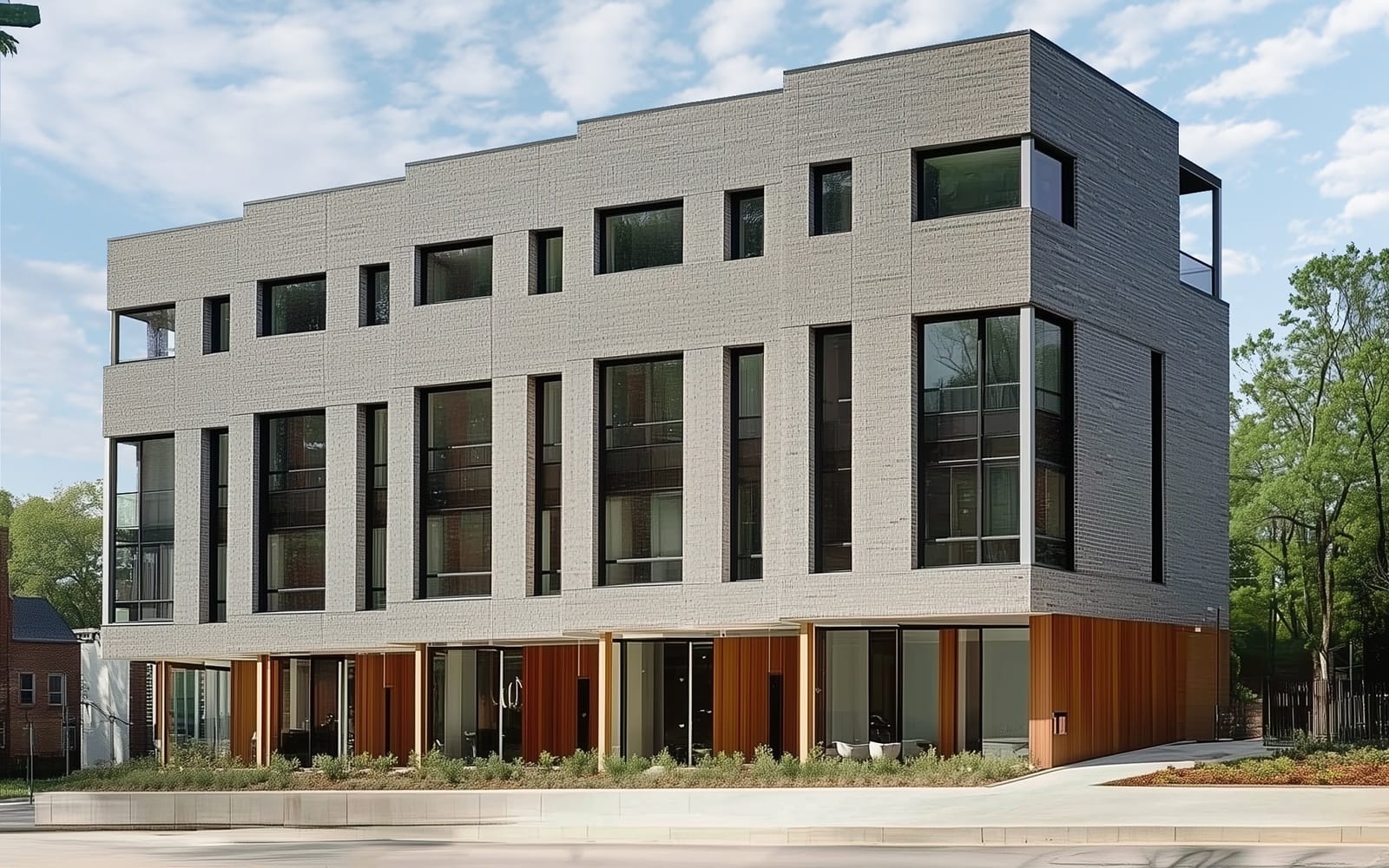Architecture
AI Crushes Missing-Middle Time And Cost Curves Toward Affordability
Developing multifamily rental and for-sale properties takes time — sometimes years -- depending on a labyrinth of zoning rules and the whims of local jurisdictions.

In development initiatives to build infill missing-middle housing, zoning regulations on setbacks, lot sizes, height restrictions, building codes, and construction costs can pile up as barriers that slow project timelines to a crawl.
However, an infill 17-unit missing middle housing development in Atlanta’s West End neighborhood lept over all those time barriers with a design that took two weeks rather than as many months. At the same time, the project came through with lowered costs and an increase in the number of units to boot.
How did the project bend time and cost curves as it navigated its way to reality?
Artificial intelligence.
Atlanta-based Cove Architecture, backed by $25 million in funding sources that include actor Robert Downey Jr.’s FootPrint Coalition, deployed AI platforms developed in-house to do the townhome project.
Using AI, the firm determined quickly that 15 units would work on the site. However, two additional units could be added because it was located in a redeveloping area in Atlanta.
With 15, it barely penciled," Sandeep Ahuja, Cove’s CEO and co-founder, said. "With 17, it penciled.”
AI Acceptance Streamlining Housing Development
Generative AI use has quickly worked its way into the housing industry to replace mundane tasks that have long bogged down builders and architects. It could be the solution for ending the housing shortage in the U.S., according to Boston Consulting Group.
AI acceptance has accelerated in the homebuilding industry, largely out of necessity, by quickly fine-tuning designs and cost estimation at a time when building has become increasingly more expensive. Sketches can turn into three-dimensional models in minutes. And AI culls data faster than humans, increasing decision-making speed.
The impact could be most significant in developing multifamily properties, which are more complex than single-family homes. Zoning regulations have historically been stricter for multifamily developments, making it challenging to find suitable sites. Once a site is chosen, market studies help determine pricing and assess whether a profitable project can be developed. The process can take months, especially with infill projects.
These challenges have bedeviled housing advocates pushing for building missing-middle housing. Anything that requires rezoning can stall indefinitely in the government planning and zoning process, with opposition from those who fear even the slightest increase in density.
AI three-dimensional modeling that can be regenerated quickly with public input may help sway opponents.
Accelerating the Design Process
Using AI can significantly shorten the time, leaving architects to do what they enjoy instead of dull tasks that typically consume an inordinate amount of time. Ahuja said architects are artists at their core and would prefer, for example, not to work until midnight on Christmas Eve to complete a project.
We’re able to turn out a site study in hours that takes someone weeks, with a clear understanding of what it’s going to cost, with a clear understanding of what’s possible to build, with all of the market study pulled together,” Ahuja said. “That means we can assess and evaluate where should you even build.”
The townhome project Cove designed will go from on-the-boards to reality near the Atlanta Beltline, a multi-year effort to convert old railway lines into trails and parks to revitalize Atlanta's urban core. This effort has spurred the construction of market-rate housing — condominiums, townhomes, and luxury apartments — to cater to the growing demand.
Have Your AI Agent Talk To My AI Agent
Ahuja said the developer wanted to ensure their price point didn’t exceed $450,000. The firm deployed what she called AI agents talking to each other. The AI market study agent determined what the area could support. Then, the AI zoning agent talked to the AI market agent about what could be built, noting that the property is in the Beltline overlay district, which doesn’t require as much parking, and parking could drop to zero. The AI market agent came back with the idea that the residents might want at least one car.
Both of these agents are kind of hashing it out together to figure out precisely the right approach,” Ahuja said.
The AI cost agent then optimizes the sellable space and determines the room mix — one bedroom or two to get to schematics.
One of the things we could figure out with our AI-driven approach was that this lot could only hold 15 units. Still, because it's in the Beltline overlay district, we could squeeze two more units in, which suddenly made their pro forma significantly more juicy, making the project more worthwhile for them to do,” Ahuja said.
Those two additional units made the numbers look much better for the developer selling the units.
To get there, the AI did the work of a junior architect or an intern on the research. “Instead of taking two weeks doing it, doing it in minutes,” Ahuja said.
MORE IN Architecture
Beyond Blueprints: AI Alters Home Design, Development Calculus
In an exclusive one-on-one, Higharc co-founder and Special Projects leader Michael Bergin reveals how AI is eliminating homebuilding bottlenecks, cutting soft-cycle time, and transforming home design from an unpredictable process into a precise, real-time system.
Building Back L.A.: Fast-Track Permits That Build In Resiliency
Demand to build homes with materials that can withstand the increasingly frequent and intense wildfires is growing. However, whether the permitting process can keep pace with the demand has become an increasingly-contested, and urgent issue.
2025: A Turning Point For Homebuilding Tech Integration
This year marks a pivotal shift as homebuilders adopt unified digital solutions that connect design, ERP, and CRM systems into a single lifecycle platform. This strategy enhances builder efficiency, cuts complexity, and drives faster product delivery through integration and AI-driven tools.
